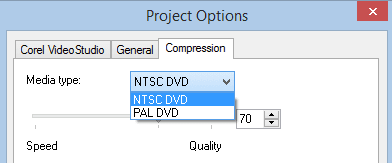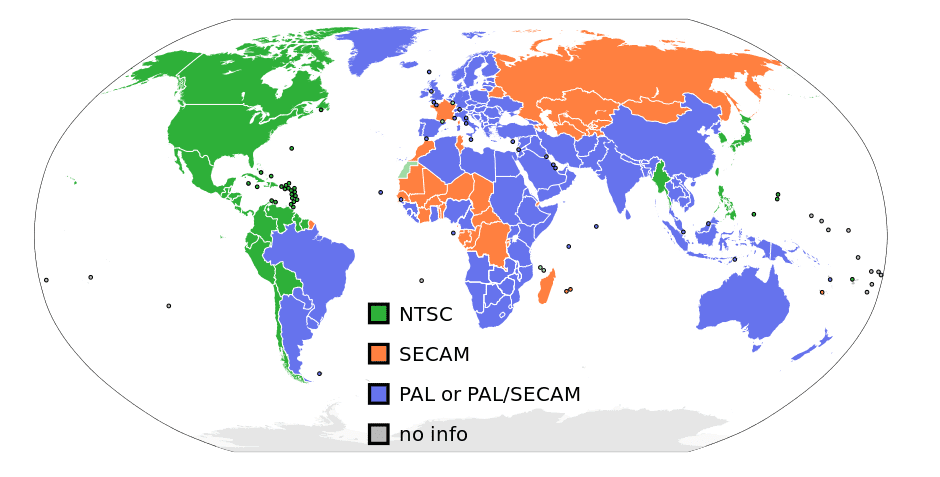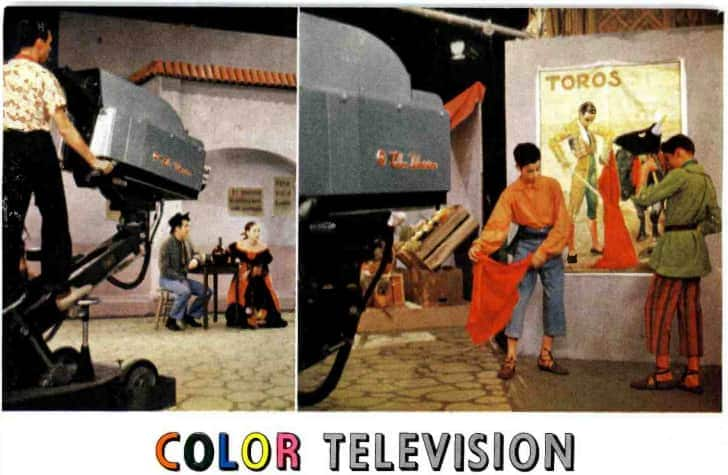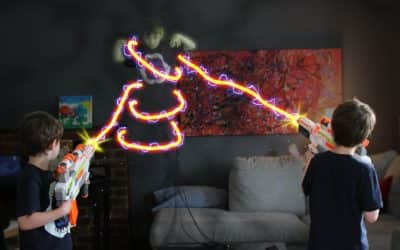What is NTSC Format?
NTSC format is the color encoding system used by DVD players and until recently by broadcast television in North America, Japan, and most of South America.
As color televison began to replace black and white, companies in the United States were using a number of different methods for encoding color to be broadcast to people’s homes. However, these methods conflicted both with each other and with older black and white television sets, which weren’t able to interpret the color signals being sent to them. In 1953, the National Television System Committee, after which the NTSC standard is named, developed and enforced a single method that could be used across the nation and be compatible with as many different TV sets as possible.
Though modern television sets don’t strictly use the NTSC format any longer, the timing and type of signal used carry over, so the format they use is usually called NTSC.
What is PAL Format?
PAL format is the color encoding system used by DVD players and broadcast television in Europe, most of Asia and Oceania, most of Africa, and parts of South America.
PAL formatting, along with a third common standard called SECAM (A French acronym that translates as Sequential Color with Memory) was developed in the late 1950s to deal with certain shortcomings of the NTSC system as it became more widely used. The way NTSC encodes color meant the signal lost clarity under poor conditions, so early NTSC systems were vulnerable to bad weather, large buildings, especially rough terrain, and other factors. To solve this problem, the PAL video format reverses every second line in the signal, effectively cancelling out errors. Unlike NTSC, PAL encoding is still often used for over the air broadcasting in the regions in which it was adopted.
NTSC vs PAL: Which one should I use?
The short answer for most people will be NTSC. Many video editing programs such as VideoStudio let you choose whether to output your work as NTSC- or PAL-formatted videos when burning to a DVD.

Which format you should use mostly depends on your location and that of your viewers, as you can see in the map below. If you’re producing videos that will be viewed globally, NTSC is a safer choice by default – most PAL VCRs and DVD players can play NTSC video, whereas NTSC players generally can’t play PAL video.

Why are these formats still used?
The short answer is that they aren’t, at least not in the same way that they were originally intended to be. As you might imagine, the technical challenges these encoding systems were created to solve in the 1950’s don’t really apply to the modern world. However, DVDs are still labelled NTSC or PAL, and the timings, resolutions, and refresh rates established in these systems are still used in modern televisions and monitors.
The main reason for this is content regionalization. Using different video formats acts as a layer of physical protection to reinforce national copyright laws and prevent movies and television from being distributed in countries without permission. In fact, this use of the formats as a legal enforcement method is so well-established that the distribution regions for video games and other interactive electronic media are often called the NTSC and PAL regions, even though that kind of software runs perfectly on either type of display.
But what’s the technical difference between PAL and NTSC?
If you’re interested in more technical information about NTSC vs PAL and their history, here’s a brief explanation:
TVs draw their images line by line, and create the illusion of movement by displaying these images, slightly changed, many times per second. The broadcast signal for black and white television simply specified a level of brightness at each point along the line, so each frame was simply a signal with brightness information for each line. Originally, North American televisions displayed 30 frames per second (FPS), or one frame for every full alternation of a 60hz household alternating current outlet. However, when color was added to these broadcasts, the black and white TV sets weren’t able to distinguish the color information from brightness information, so they tried to display the color signal as part of the picture, adding nonsense to the image. To display color without causing this problem, the broadcast needed to have a second chrominance signal added in between the oscillations of the luminance signal, which the black and white TVs would ignore, and the color TVs would look for and display using an adapter called a Colorplexer. Because this extra signal was added in between each frame refresh, it lengthened the amount of time each frame took to transfer, and the actual FPS of the display was reduced, which is why NTSC TV plays at 29.97 frames per second instead of an even 30.

In PAL regions, the standard household outlet uses a 50Hz current, so the default FPS rate was 25. The other primary difference in the two signals is that PAL signal uses 625 signal lines, of which 576 (known as 576i signal) appear as visible lines on the television set, whereas NTSC formatted signal uses 525 lines, of which 480 appear visibly (480i). In PAL video, every second line has the phase of the color signal reversed, which leads to the signals flattening out the frequency between the lines. Effectively what this means is that damage to the signal appears as errors in saturation (level of color) rather than hue (shade of color) as it would appear in NTSC video, leading to a higher-fidelity picture of the original studio version. In exchange, PAL signal loses some vertical color resolution, making colors on lines directly above and beneath one another blur together more, though this effect isn’t visible to the naked human eye.
On a DVD, the signal isn’t encoded based on a carrier wave, so the frequency and phase differences between the two formats don’t exist; the only real difference is the resolution and the frame rate at which the video plays.
So there you have it! More information on NTSC vs PAL than you can shake a stick at! Be sure to check back regularly for more great content here on the Discovery Center.










37 Comments